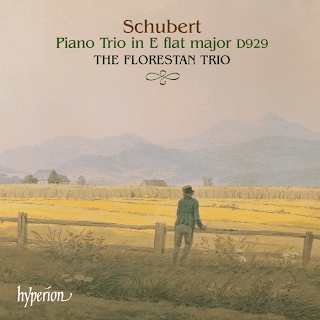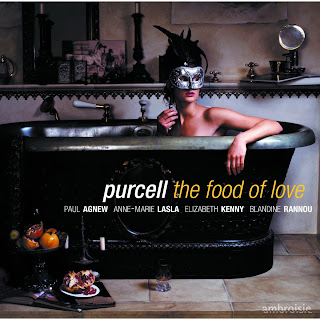The estimable Florestan Trio
completes its "cycle" of Schubert Piano Trios with this recording of
the E-flat major trio, a performance as wonderfully incisive as its
earlier rendition of the trio in B-flat major. While the present
recording was made in late December 2001, a full year after the first,
Hyperion still managed to secure the services of the same engineer (Tony
Faulkner) to work his magic with these terrific players, so there is a
uniformity to the sound that is comforting and will smoothly pave the
way for a two-disc set at some point. In the meantime, anyone who loves
this work may still want to shell out full price for this disc, as it
represents Schubert performance at the
highest level.
While the Florestan members play with impeccable unity, pianist Susan Tomes still stands out slightly, thanks largely to her amazingly graceful phrasing. Listen to the way she manages a pianissimo in the feather-light background triplets in the development of the first movement while gradually increasing the intensity of the bass line. Of course, her partners are no slouches either. Violinist Anthony Marwood's playful, lilting phrasing of the main theme in the Andante negates any sense of lethargy, and cellist Richard Lester's observance of dynamics (especially in the opening of the first movement) is letter-perfect. Besides the group's over-arching feel for this music, the unanimity of attack and the fastidious, carefully measured attention to dynamics marks their performance as being truly special and consistent with their fine account of the B-flat trio, offering a sort of reference model for avid score readers. For instance, in the second movement, they reserve enough power to distinguish the double- and triple-forte passages in a way that indicates without doubt the climactic moment, even if there is a tendency to want to bang out the earlier accented parts with some abandon.
As a filler item, the Florestans offer the first version of the finale, which was cut by Schubert most likely at the urging of performers and publishers concerned about the length of the work (itself already more than 43 minutes with all the repeats, as presented here). Ninety-eight bars in the development section have been restored, representing two cuts and adding about two minutes of music starting at 6:00 on track 5. Some of it is repetitive (the staccato eighth-note "cimbalom" passages) and while the rest adds some drama to the whole event, it doesn't alter the overall view that its exclusion makes little difference. A case against performing this original version at all is found in the liner notes, quoting a letter from Schubert to his publisher exhorting performers (and the publisher) to "scrupulously" observe the cuts in the last movement. So, to justify this full-price release, the Florestans perhaps had to push their luck and buck their muse's wishes. (Michael Liebowitz, ClassicsToday.com)
While the Florestan members play with impeccable unity, pianist Susan Tomes still stands out slightly, thanks largely to her amazingly graceful phrasing. Listen to the way she manages a pianissimo in the feather-light background triplets in the development of the first movement while gradually increasing the intensity of the bass line. Of course, her partners are no slouches either. Violinist Anthony Marwood's playful, lilting phrasing of the main theme in the Andante negates any sense of lethargy, and cellist Richard Lester's observance of dynamics (especially in the opening of the first movement) is letter-perfect. Besides the group's over-arching feel for this music, the unanimity of attack and the fastidious, carefully measured attention to dynamics marks their performance as being truly special and consistent with their fine account of the B-flat trio, offering a sort of reference model for avid score readers. For instance, in the second movement, they reserve enough power to distinguish the double- and triple-forte passages in a way that indicates without doubt the climactic moment, even if there is a tendency to want to bang out the earlier accented parts with some abandon.
As a filler item, the Florestans offer the first version of the finale, which was cut by Schubert most likely at the urging of performers and publishers concerned about the length of the work (itself already more than 43 minutes with all the repeats, as presented here). Ninety-eight bars in the development section have been restored, representing two cuts and adding about two minutes of music starting at 6:00 on track 5. Some of it is repetitive (the staccato eighth-note "cimbalom" passages) and while the rest adds some drama to the whole event, it doesn't alter the overall view that its exclusion makes little difference. A case against performing this original version at all is found in the liner notes, quoting a letter from Schubert to his publisher exhorting performers (and the publisher) to "scrupulously" observe the cuts in the last movement. So, to justify this full-price release, the Florestans perhaps had to push their luck and buck their muse's wishes. (Michael Liebowitz, ClassicsToday.com)





























